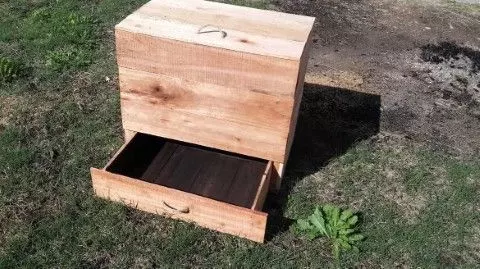Welcome to our comprehensive guide on creating your very own red worm farm! In this article, we will walk you through the step-by-step process of setting up and maintaining a successful red worm farm for vermicomposting. Get ready to delve into the world of these amazing composting worms and learn how to harness their incredible capabilities to create nutrient-rich organic fertilizer for your garden. Let’s get started!
Californian Red Worms Farming or Vermiculture consists of the intensive cultivation of the red worms (Eisenia fetida) in organic residues used with 2 proposes:
1- To obtain humus: the organic wastes thrown by the Worm as fertilizer for agricultural crops and represents the highest state of decomposition of organic matter, it is compost of excellent quality.
2- To obtain high-protein food for feeding animals such as pigs or fish. The Californian red worm has 70% protein and it can multiply up to 512 times during life (while the common earthworm only can multiply between 4 to 6 times during life). Two worms can produce, each one, under normal conditions, about 1,500 worms a year, therefore a couple will give rise to 3,000 worms.
That is why the production of the red worm, whether for obtaining humus, liquid compost or to produce more worms, is profitable. Although it requires permanent care (at least every other day), these are quickly reflected in better performance, which is gratifying.
Here are our professional tips with which we have obtained the best returns, focused on the reproduction of worms as an economically profitable business.
Table of Contents
Materials and Methods to Make Your Own Red Worms Farm Box
Calculations below commented consider that production occurs at 780 meters above sea level, with an annual rainfall of 1100mm and an average temperature of 77 F (25 °C).
A) Wooden boxes of 40”x 20” x 12” (1 × 0.5 × 0.3 m). Create a slope for the floor between 2 and 5% to prevent flooding of the bed when watering.
B) 64 lbs (29 kg) of food substrate (Pig manure for better performance)
C ) Garden hoses to keep the boxes moist
D) Calculation for watering the manure for three days with 4 gallons (15.7 L) per day before placing the worms so that the box is completely wet and avoiding protein poisoning of the worms with the manure.
E) A mesh cover to be in place over the boxes to provide shade, retain moisture, and protect against birds. A thick bed of dry leaves can also be an economical option.
F) Add 500 worms to the box, constantly maintaining humidity to the substrate with daily watering of 2.64 gallons (10 L) per box. (Order Red Worms here).
G) It’s recommended to add calcium oxide around the boxes to prevent ants from entering the treatments.
- NaturesGoodGuys Live Redworms Composting Red Worms - 600 Red Wigglers
- These Red Worms turn Organic Waste into Nutrient Rich Soil!
- Red Worms are Nature's Garbage Disposal

Pig manure is the best substrate to produce worms, since it presented the most favorable conditions, obtaining a larger size. The humus with the highest content of total nutrients was the one produced with goat manure in the box environment. The production of humus was similar for all substrates in the two environments.

Recommendations
Use pig manure to produce worms and humus. Carry out similar studies with other types of organic waste (vegetables, coffee pulp, silage remnants, non-resinous wood chips).
How to Make a Red Worm Farm: Humus Collection
You should separate earthworms to harvest the Vermicompost (Humus) two or three times a year, depending on the rate of decomposition of the substrate. When the substrate reaches the maximum height of the bed, feeding and irrigation are suspended for a week, to force the worms to consume all the material that has not been transformed.
Depending on the number of worms, it may be necessary to repeat this operation up to three times. The separated worms are used to expand the crop, as a breeding ground for new vermiculture, or as a source of protein for animal feed. At the end of the separation of the worms, the worm compound is removed from the lower part of the bed. Humus can be used with the humidity obtained (around 80%) or lower the humidity to a maximum of 50%, with which it is usually sold. For this, solar dryers can be used, such as the parabolic type used to dry coffee, made of bamboo and plastic.

